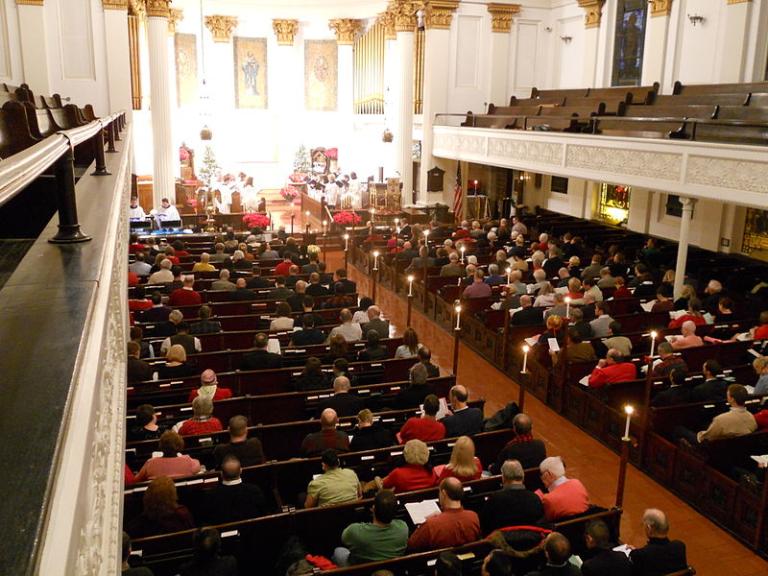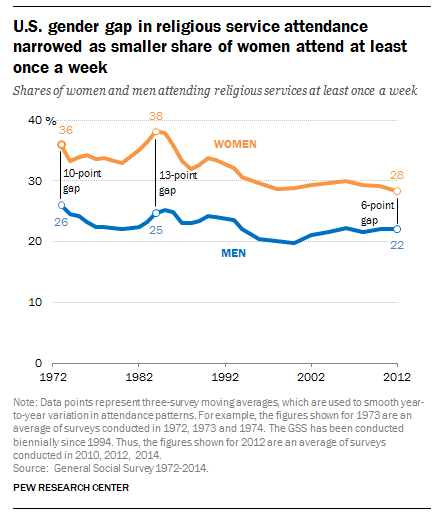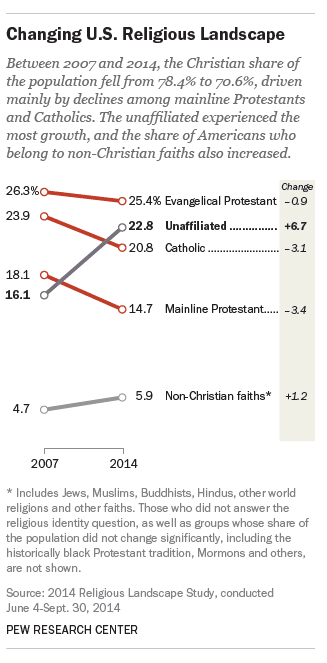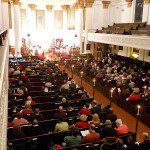
That’s not their headline, in the item they posted on Friday. They say, instead, “Gender gap in religious service attendance has narrowed in U.S.” which is correct, to be sure. Here’s the graph:

and, indeed, men’s church attendance has dropped off to a lesser degree than women’s, lessening the gap.
At the same time, a year ago, everyone (including me) was talking about the “rise of the nones” based on another Pew study which found dramatic changes in religious identification from as short a time period as 2007 to 2014. (Did I ever tell you that I looked at the open job listings at Pew once? Looks like fun, but I doubt they’d hire someone without experience to work part-time and remotely from suburban Chicago.) Here’s that graph:

So despite significant drop-offs in the number of people who identify as Christian, weekly church attendance has been relatively stable during that time period, and, presumably, what’s happened is that people at the margins, the Christmas and Easter attenders, are the ones who have lost that sense of identification as Christian, but that the core group is still there.
And, what’s more, weekly church attendance among men has been surprisingly stable, and the drop-off has been largely a female thing. I’m not going to speculate on why, but I invite you to do so.
Image: Church of St. Luke and the Epiphany, Philadelphia (public domain via Wikipedia)













